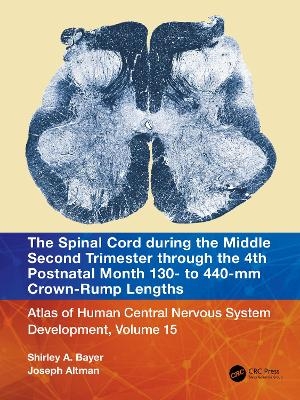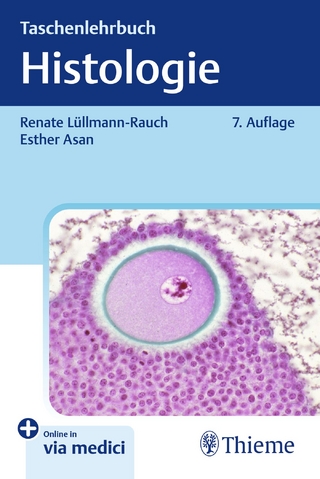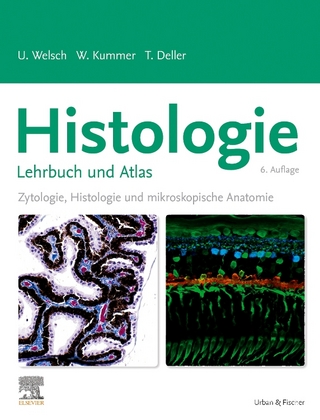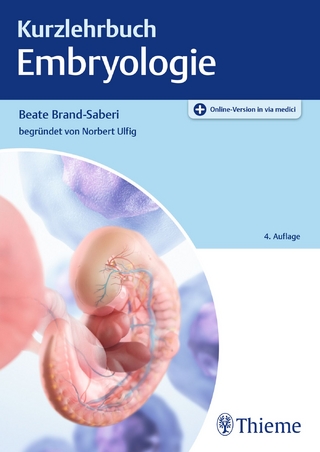
The Spinal Cord during the Middle Second Trimester through the 4th Postnatal Month 130- to 440-mm Crown-Rump Lengths
CRC Press (Verlag)
978-1-032-22910-2 (ISBN)
This last of 15 short atlases reimagines the classic 5 volume Atlas of Human Central Nervous System Development. This volume presents serial sections of the spinal cord from specimens between 130 mm and 440 mm with detailed annotations. The presentation of these specimens emphasizes the sequence of myelination in various fiber tracts.
The Glossary (available separately) gives definitions for all the terms used in this volume and all the others in the Atlas.
Key Features
Classic anatomical atlases
Detailed labeling of structures in the developing spinal cord offers updated terminology and the identification of unique developmental features, such as myelination gliosis and gradients of myelination in the spinal cord white matter
Appeals to neuroanatomists, developmental biologists, and clinical practitioners
A valuable reference work on brain development that will be relevant for decades
Shirley A. Bayer received her PhD from Purdue University in 1974 and spent most of her scientific career working with Joseph Altman. She was a Professor of Biology at Indiana-Purdue University in Indianpolis for several years, where she taught courses in Human Anatomy and Developmental Neurobiology while continuing to do research in brain development. Her lengthy publication record of dozens of peer reviewed scientific journal articles extends back to the mid 1970's. She has co-authored several books and many articles with her late spouse, Joseph Altman. It was her research (published in Science in 1982) that proved that new neurons are added to granule cells in the dentate gyrus during adult life, a unique neuronal population that grows. That paper stimulated interest in the dormant field of adult neurogenesis. Joseph Altman, now deceased, was born in Hungary and migrated with his family via Germany and Australia to the United States. In New York, he became a graduate student in psychology in the laboratory of Hans-Lukas Teuber, earning a PhD. in 1959 from New York University. He was a postdoctoral fellow at Columbia University, and later joined the faculty at the Massachusetts Institute of Technology. In 1968, he accepted a position as a Professor of Biology at Purdue University. During his career, he collaborated closely with Shirley A. Bayer. From the early 1960s to 2016. He published many articles in peer-reviewed journals, books, monographs, and online free books that emphasized developmental processes in brain anatomy and function. His most important discovery was adult neurogenesis, the creation of new neurons in the adult brain. This discovery was made in the early 1960s while he was based at MIT and was largely ignored in favor of the prevailing dogma that neurogenesis is limited to prenatal development. After Shirley’s paper proved that new neurons are adding to granule cells in the hippocampus, Altman’s monumental discovery became more accepted. During the 1990s, new researchers “rediscovered” and confirmed his original finding. Adult neurogenesis has recently been proven to occur in the dentate gyrus, olfactory bulb, and striatum through the measurement of Carbon-14—the levels of which changed during nuclear bomb testing throughout the 20th century—in postmortem human brains. Today, many laboratories around the world are continuing to study the importance of adult neurogenesis in brain function. In 2011, Altman was awarded the Prince of Asturias Award, an annual prize given in Spain by the Prince of Asturias Foundation to individuals, entities or organizations from around the world who make notable achievements in the sciences, humanities, and public affairs. In 2012 he received the International Prize for Biology - an annual award from the Japan Society for the Promotion of Science (JSPS) for "outstanding contribution to the advancement of research in fundamental biology." This Prize is one of the most prestigious honors a scientist can receive. Altman died in 2016, and Shirley continues the work they started over 50 years ago. In Altman’s honor, Shirley has set up the Altman Prize, awarded each year to an outstanding young researcher in developmental neuroscience by JSPS.
PART I. INTRODUCTION Specimens and Organization, Developmental Highlights, References PART II. 130-mm Crown-Rump Length, Gestation Week 19, Y52-60 Overview Plate 1Plates 2–8 A/B PART III. 210-mm Crown-Rump Length, Gestation Week 26, Y60-61 Overview Plate 9 Plates 10–15 A/B PART IV. 270-mm Crown-Rump Length, Gestation Week 31, Y162-61 Overview Plate 16 Plates 17–24 A/B PART V. 310-mm Crown-Rump Length, Gestation Week 37, Y117-61 Overview Plate 25 Plates 26–41 A/B PART VI. 350-mm Crown-Rump Length, 4-Day Infant, Y299-62 Overview Plate 42 Plates 43–54 A/B PART VII. 410-mm Crown-Rump Length, 4-Week Infant, Y23-60Overview Plate 55 Plates 43–54 A/B PART VIII. 440-mm Crown-Rump Length, 4-Month Infant, Y286-62 Overview Plate 66 Plates 67–80 A/B
| Erscheinungsdatum | 10.07.2024 |
|---|---|
| Zusatzinfo | 76 Tables, black and white; 3 Halftones, color; 154 Halftones, black and white; 3 Illustrations, color; 154 Illustrations, black and white |
| Verlagsort | London |
| Sprache | englisch |
| Maße | 210 x 280 mm |
| Gewicht | 500 g |
| Themenwelt | Medizin / Pharmazie ► Allgemeines / Lexika |
| Medizin / Pharmazie ► Medizinische Fachgebiete ► Neurologie | |
| Studium ► 1. Studienabschnitt (Vorklinik) ► Histologie / Embryologie | |
| Naturwissenschaften ► Biologie ► Genetik / Molekularbiologie | |
| Naturwissenschaften ► Biologie ► Humanbiologie | |
| ISBN-10 | 1-032-22910-1 / 1032229101 |
| ISBN-13 | 978-1-032-22910-2 / 9781032229102 |
| Zustand | Neuware |
| Informationen gemäß Produktsicherheitsverordnung (GPSR) | |
| Haben Sie eine Frage zum Produkt? |
aus dem Bereich


